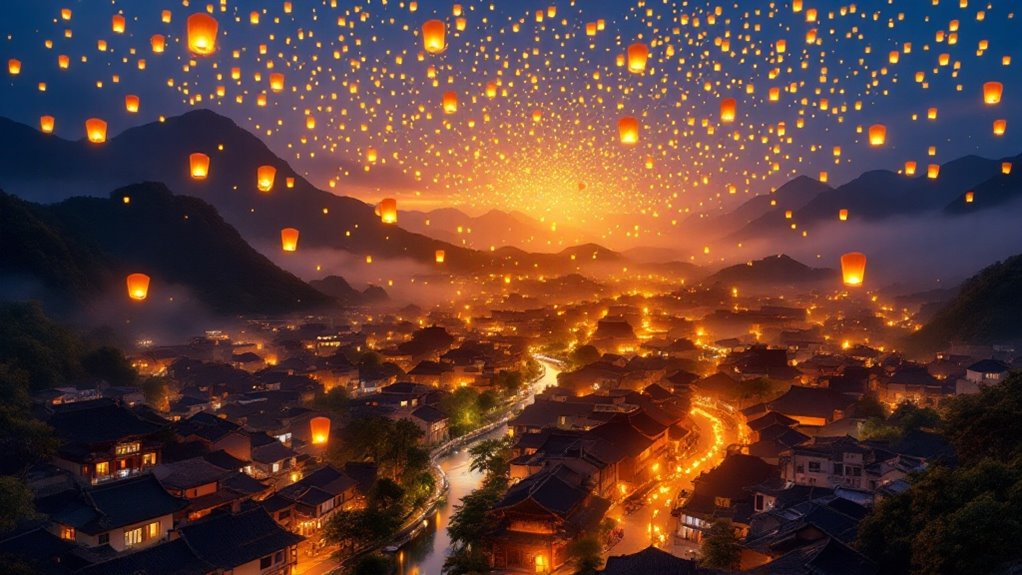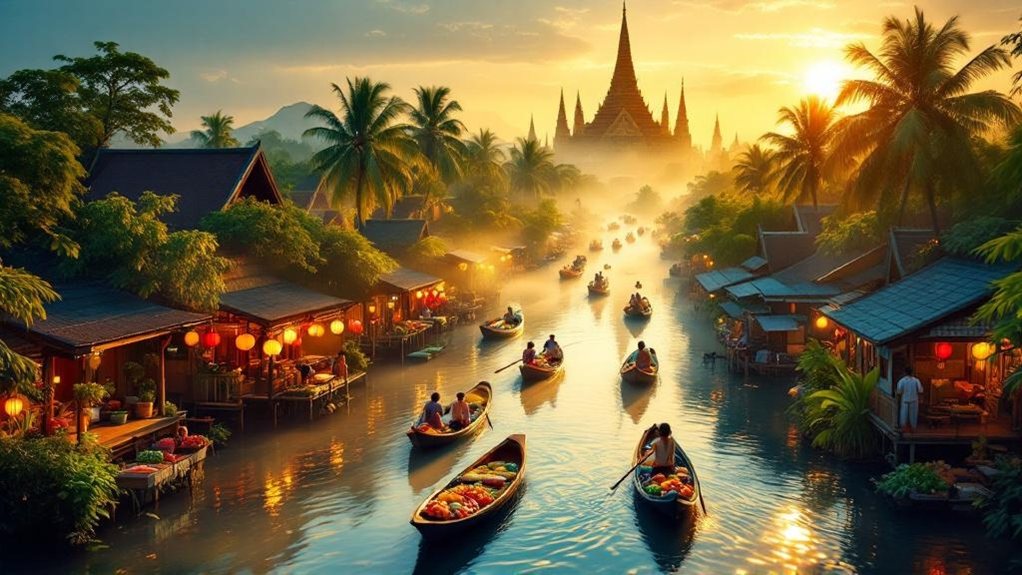Lantern lovers flock to Asia’s festival cities due to the region’s enduring lantern traditions, vibrant festivities, and visually striking ceremonies. Iconic destinations such as Pingxi in Taiwan, Hoi An in Vietnam, and Chiang Mai in Thailand offer large-scale events drawing thousands of visitors, where communities release lanterns symbolizing hope and new beginnings. These gatherings stimulate local economies and promote cultural preservation, while also offering elaborate displays and unique regional customs. Further exploration reveals distinct celebrations and cultural significance in each city.
Although lantern festivals are celebrated across various cultures in Asia, certain cities have become renowned destinations for these luminous events due to their historical importance, cultural vibrancy, and large-scale participation.
Lantern festivals, such as Taiwan’s Pingxi Sky Lantern Festival, have deep historical roots, originating as signals of safety during periods of conflict. These events have evolved into major cultural gatherings, attracting global visitors who participate in releasing lanterns inscribed with personal wishes and prayers. The symbolic act of releasing lanterns represents hope, the dispelling of darkness, and aspirations for a brighter future, which enhances their spiritual and cultural significance. [Lanterns have been used in Asia for centuries, with their origins tracing back to the Eastern Han Dynasty in China (25–220 C.E.), where they served both practical and spiritual functions.]
Releasing lanterns at festivals symbolizes hope and new beginnings, transforming ancient rituals into powerful expressions of shared dreams and brighter futures.
Cities like Pingxi, Taiwan, Hoi An in Vietnam, Chiang Mai in Thailand, Jinju in South Korea, and Nara in Japan have developed distinct reputations for their lantern festivals. Pingxi, for example, draws thousands of international attendees annually, while Hoi An’s Full Moon Lantern Festival, held monthly, transforms its ancient town with vibrant lights and traditional performances. During Japan’s Tōrō Nagashi, lanterns are floated on rivers to guide ancestral spirits, creating a serene and picturesque scene that adds a deeply spiritual layer to the festivities.
Chiang Mai’s Loy Krathong and Yi Peng festivals, celebrated in late November, combine floating lanterns on water with the release of sky lanterns, creating a visually striking spectacle. Jinju’s Namgang Lantern Festival, rooted in historical commemoration, features lantern displays that narrate the city’s heritage and engage local communities. Nara’s Tokae Lantern Festival, held during Obon in August, incorporates thousands of candles, contributing to both spiritual observance and visual grandeur.
Festival activities typically include the creation of lanterns in various shapes and colors, often depicting local folklore or historical events, as well as traditional games, performances, and food stalls offering regional snacks and crafts. Fireworks displays frequently accompany the festivities, heightening the celebratory atmosphere and drawing additional crowds.
These events not only foster community engagement and cultural preservation but also stimulate local economies through tourism, craft sales, and international promotion. Lantern festivals, by aligning with lunar calendars and significant cultural dates, also serve as platforms for storytelling and cultural exchange, ensuring their ongoing relevance and appeal to both local populations and global travelers interested in Asia’s rich festival traditions.






